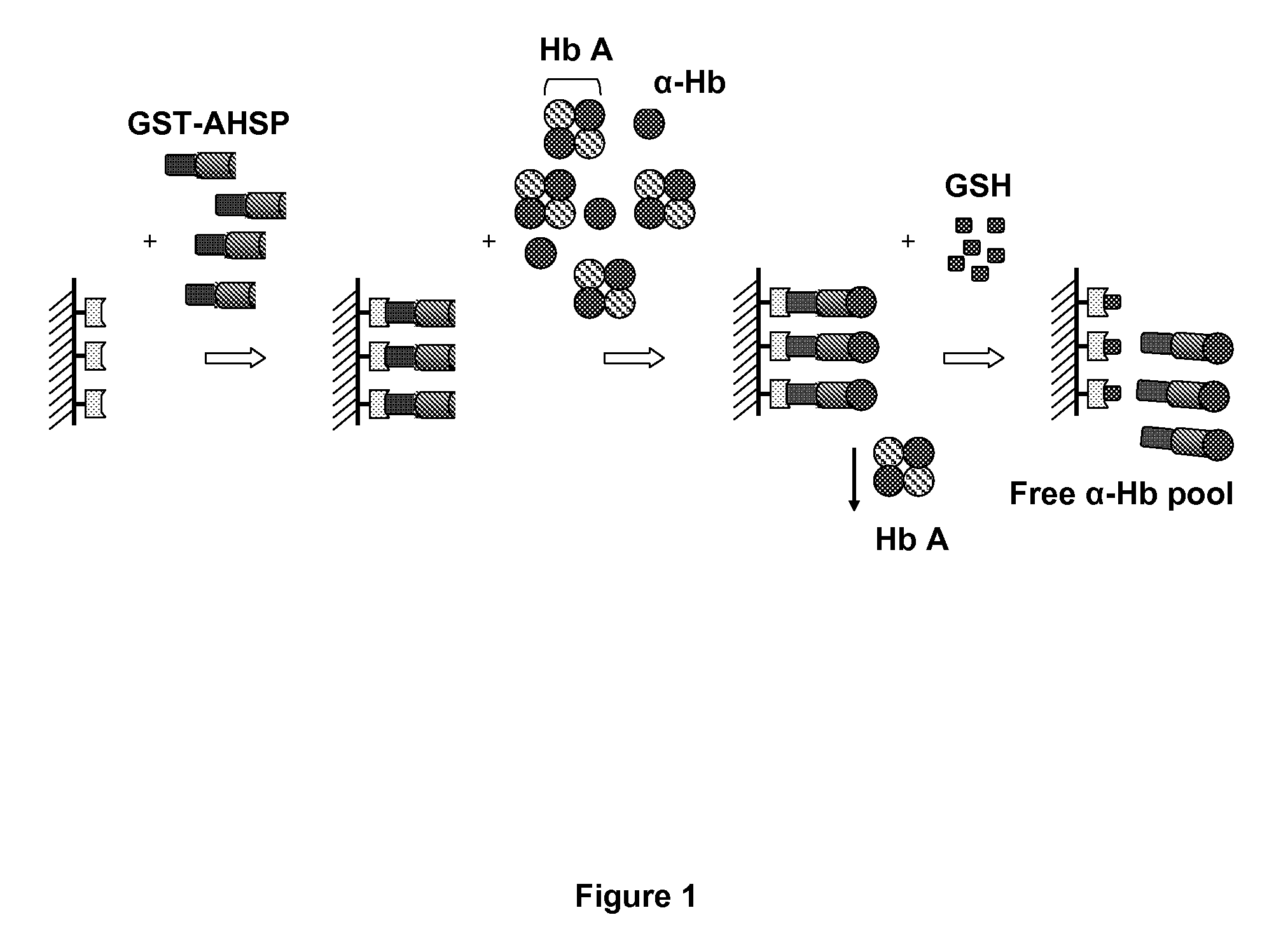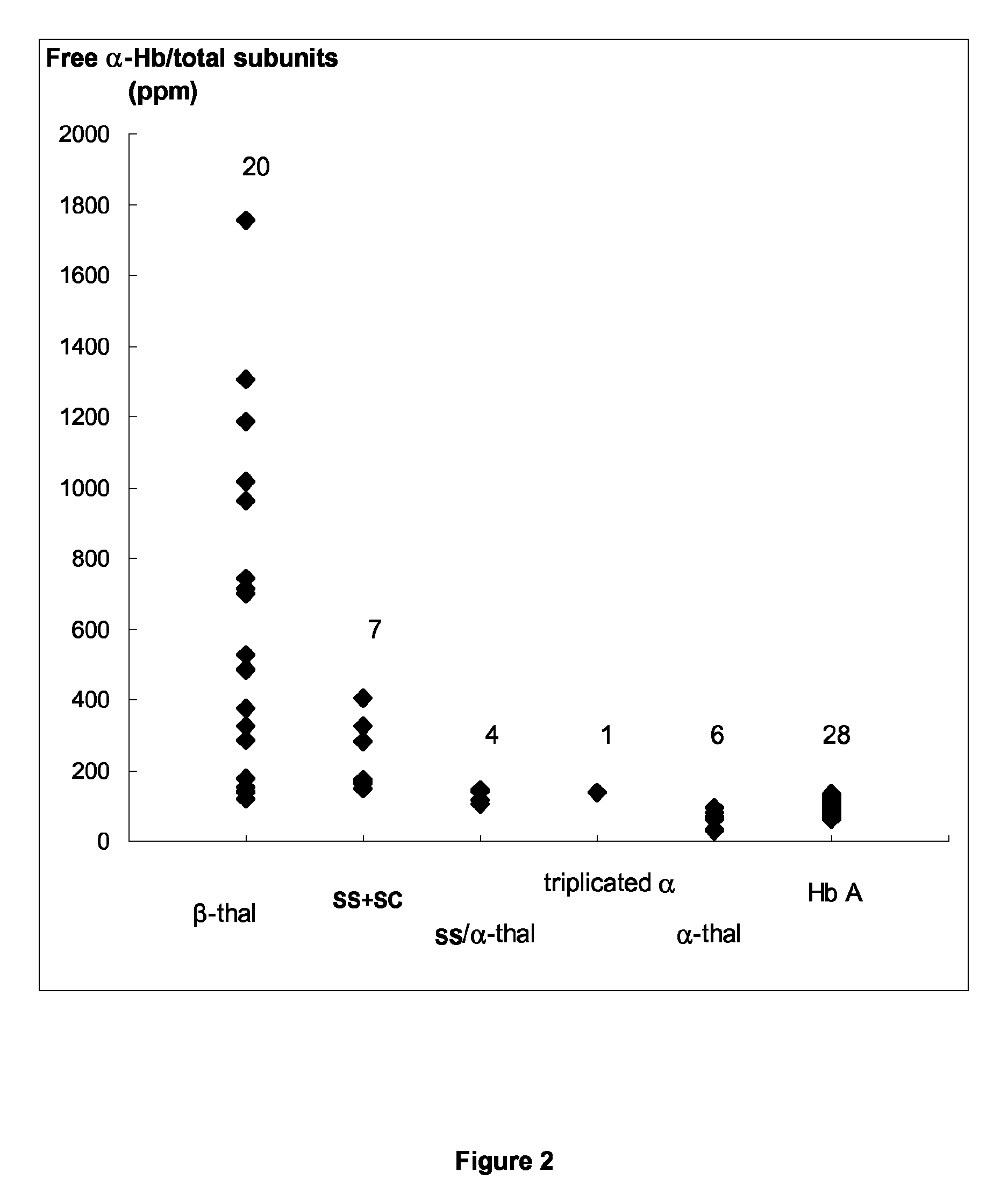Method for diagnosing a hemoglobin-related disorder
a hemoglobin-related disorder and disorder technology, applied in the field of hemoglobin-related disorder diagnosis and/or staging, can solve the problems of triggering cell apoptosis, overwhelming by defective production, damage to cells,
- Summary
- Abstract
- Description
- Claims
- Application Information
AI Technical Summary
Benefits of technology
Problems solved by technology
Method used
Image
Examples
example
Material & Methods
[0148]Patients:
[0149]This study concerns 66 patients (43 males and 23 females) including 28 patients without apparent Hb disorder (reference group) (21 males and 7 females; mean age, 63±11 years), 20 β-thalassemic patients (12 males and 8 females; mean age, 39±15 years), 6 α-thalassemic patients (2 males and 4 females; mean age, 50±15 years), 7 SS or SC patients (4 males and 3 females; mean age, 36±9 years), 4 patients SS / α-thal (3 males and 1 female, mean age, 39±8 years) and 1 male triplicated α patient (69 years) For patients, except the controls without apparent Hb disorder, the β- and α-thal genotypes were determined. An informed consent was obtained from all participants to this study according to the international Helsinki declaration and French ethical regulations.
[0150]Hematological and Genotyping Investigations:
[0151]EDTA-anticoagulated Venous Blood samples was collected during routine sampling for the current follow-up of their clinical conditions. Hb ph...
PUM
| Property | Measurement | Unit |
|---|---|---|
| pH | aaaaa | aaaaa |
| pH | aaaaa | aaaaa |
| time | aaaaa | aaaaa |
Abstract
Description
Claims
Application Information
 Login to View More
Login to View More - R&D
- Intellectual Property
- Life Sciences
- Materials
- Tech Scout
- Unparalleled Data Quality
- Higher Quality Content
- 60% Fewer Hallucinations
Browse by: Latest US Patents, China's latest patents, Technical Efficacy Thesaurus, Application Domain, Technology Topic, Popular Technical Reports.
© 2025 PatSnap. All rights reserved.Legal|Privacy policy|Modern Slavery Act Transparency Statement|Sitemap|About US| Contact US: help@patsnap.com



